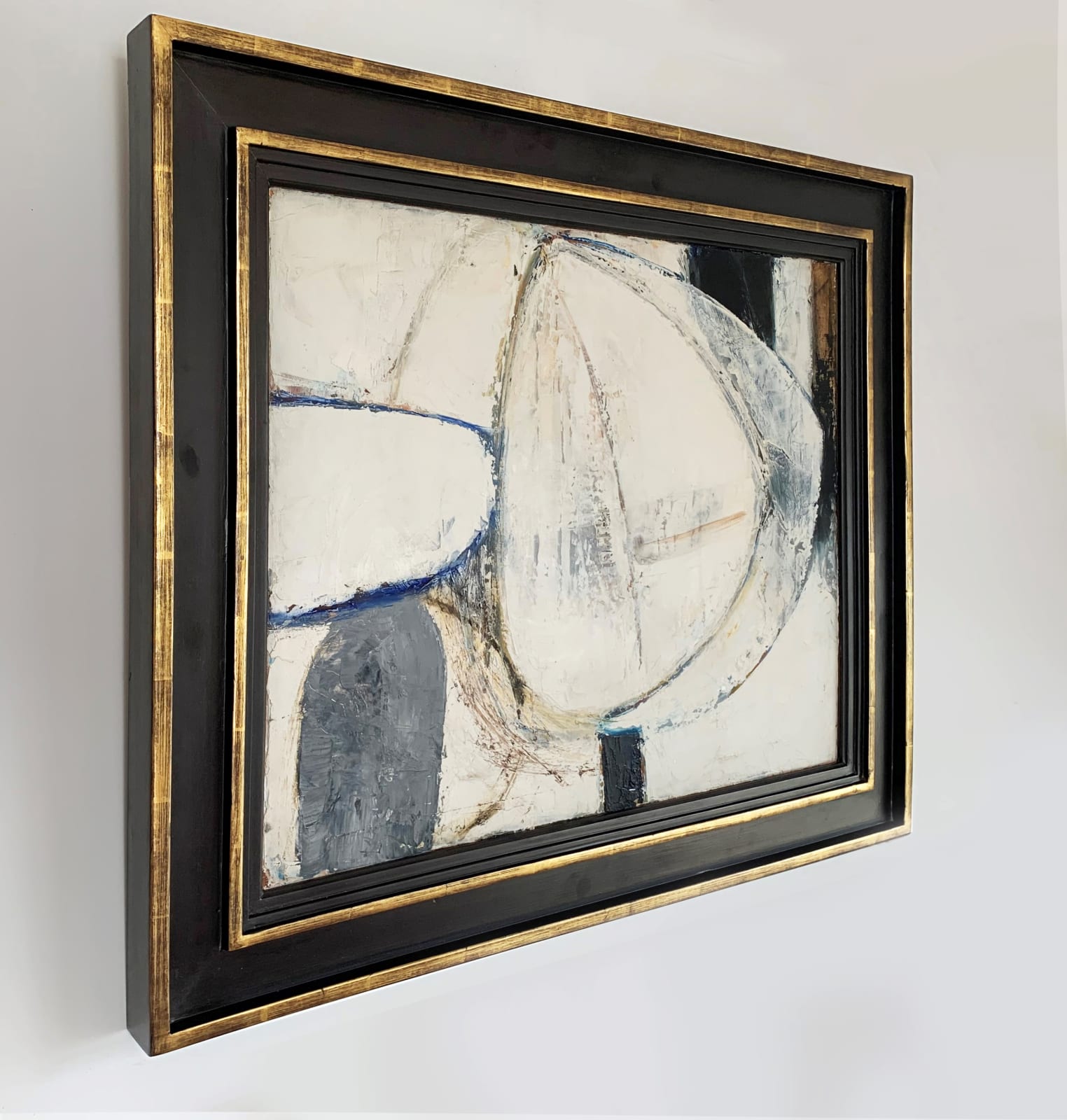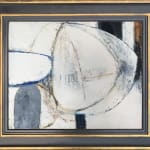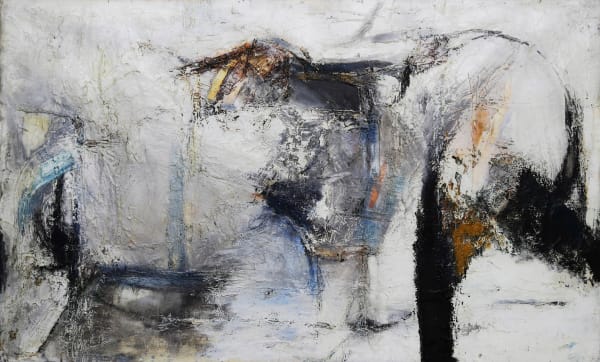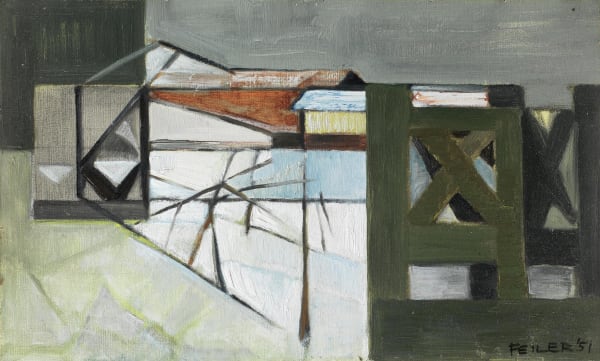
Floating Forms Blue (1963-64) by Paul Feiler
Paul Feiler 1918-2013
Framed: 61.5 x 71.9 cm (24.2 x 28.3 ins)
Further images
Provenance
Purchased by the previous owner's father from the Grosvenor Gallery, thence by descent.
Exhibitions
Grosvenor Gallery, 1965. Feiler’s solo exhibition.
In 1962 and 1965 Paul Feiler had solo exhibitions at the Grosvenor Gallery; Floating Forms Blue (1963-64) is from the second of these shows.
By the mid-1960s, Paul Feiler had started to move away from an abstraction concerned with place, usually West Cornwall landmarks like Porthledden (1960), towards an intellectual consideration of space, light and form. Floating Forms Blue comes from this period. In this painting Feiler is concerned with finding space within the interior of the canvas through a geometry of forms. Thick white paint covers most of the canvas, the arrangement of rounded and elliptical forms delineated in accents of bright blue, greys, black and ochre. In Floating Forms Blue, Feiler, as he often would, has worked on the painting for over a year, reworking and over-painting before a final form is realised. Earlier forms are discernible through the artist’s layers of paint; the whole has that complex and richly worked surface so synonymous with this artist. As Feiler had explained a decade earlier in response to the work of Nicolas de Staël, "I was already using broad brushstrokes and thick paint, but now made them broader and the paint thicker. It was the handling of the paint that I found exciting."
The painting also recalls the close friendship and artistic dialogue with Peter Lanyon (1918-1964), who had taken up gliding in 1959, a passion that effected a great change in Lanyon’s palette, method and abstract subject matter. Lanyon’s abstraction of his gliding experience, of wind, sky and thermal uplifts, became the primary concern of his work in the early 1960s and Floating Forms Blue, even in its title, bears evidence of his influence upon Feiler. Poignantly it was completed the year of Lanyon’s tragic death following a gliding accident.
Feiler and Lanyon’s growing reputation in America had led Mark Rothko to visit Cornwall and Feiler’s studio a few years earlier. It is often observed that the abstraction of the New York modernists was intellectual in its origins whilst that of their St Ives contemporaries was fundamentally wedded to landscape. Floating Forms Blue and its intentional move away from a direct association with place, may therefore be seen as a shift towards this more purely intellectual concern and as such, likely in part to have been influenced by Feiler's trans-Atlantic peers.








